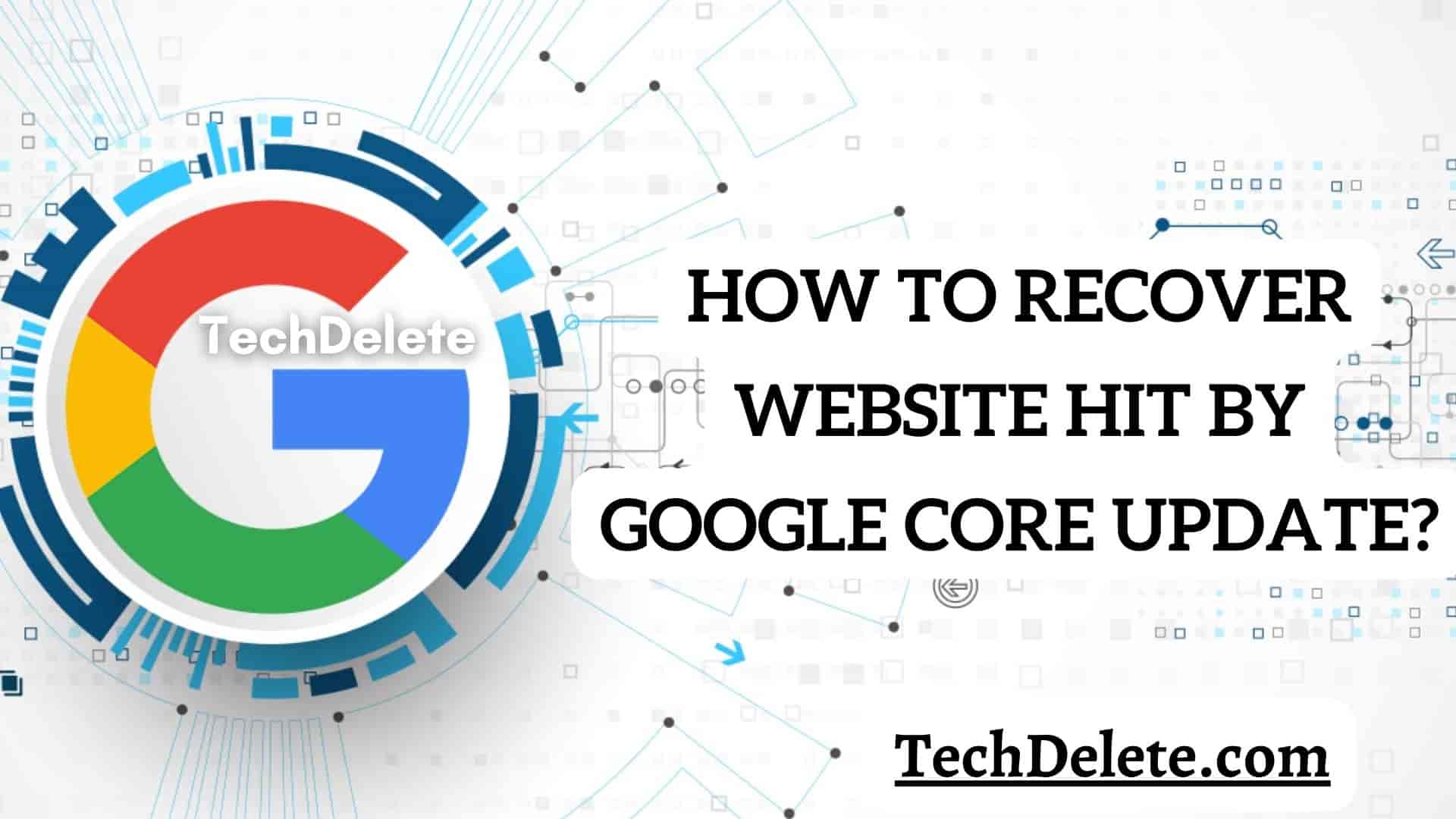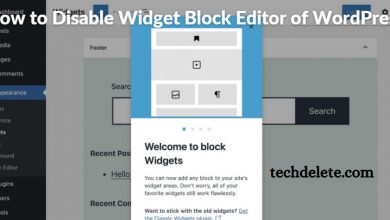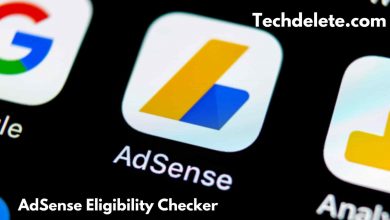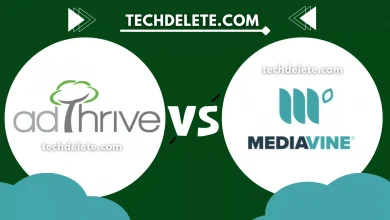If you’ve been hit by Google’s latest core update and your website is now offline, don’t despair! There are a few things you can do to recover your website and get back online as quickly as possible. In this article, we’ll outline the steps you need to take to get your website up and running again.
The Google Core update is an essential part of promoting a website’s security, which can cause significant damage.
If your website has been hit by the Google Core update, there are several things that you can do to restore its integrity and make sure that any data loss is minimized.
Hello, I am experiencing some website issues that I need help to solve. Yesterday, Google released a major update to their search engine. This update, known as “Google Core”, has caused my website to take a hit. I am not sure how to recover from this damage, and I need some assistance. If you can offer any advice or guidance, I would really appreciate it. Thank you for taking the time to read this comment.
Several times a year, we make significant, broad changes to our search algorithms and systems. We refer to these as “core updates.” They’re designed to ensure that overall, we’re delivering on our mission to present relevant and authoritative content to searchers.
Google Search Central Blog
John Mueller went on to give the best answer he could possibly give, and here’s a summary of his answer (not verbatim):
“ There’s nothing to fix since there’s no specific thing that the algorithm targets. A variety of factors that relate to a website sometimes evolves, and that affects your traffic and rankings.
There are no explicit changes you can do, but there is an old blog post (published 2011) on the Webmaster Central Blog that’s basically a guide on building high-quality sites and he highly recommends that webmasters read this post.”
Watch the Webmaster Hangout
How do you recover a website hit by a Google Core update?
You need first to work out why you were “hit”. Analyze competitors that were positively impacted & work out what they’re doing differently. Look at who moved above you in the SERPs too for your primary focus keywords.
Improve your Site’s Expertise, Authority, and Trustworthiness (E-A-T)
There are a few things that you can do to improve your site’s E-A-T, including strategies for SEO, content marketing, and web design. SEO is critical for improving your site’s visibility across search engines, while content marketing helps create valuable and engaging articles that help promote your brand or product. Web design should be effective and user-friendly so visitors feel at ease when visiting your website.

By optimizing your website for search engines, you can increase traffic and attract better customers. You also need to make sure that the content on your site is high quality and relevant to potential consumers.
This means using keyword-rich titles, creating engaging copy that focuses on benefits rather than features (for example), and including links to your source material from within the article or video.
You also need a strong social media presence if you want people to view your content without having first read it online. Finally, be vocal about any changes or updates that occur with regards as how best handle those issues in a timely manner so consumers know what they’re getting themselves into when visiting your site.
At the same time analyze your performance. Have you been on a negative trajectory for a while? Or has performance been increasing and suddenly dropped? Analyze winning/losing keywords & pages and identify trends there. What do your winning pages have in common?
I’d also triple-check the keywords you dropped for, did you really ever deserve to rank as well as you did? Or are the queries slightly irrelevant and Google is getting better at understanding that?
Analysis should shed some light on areas you can improve. Once you have a list of ideas, prioritize appropriately and get cracking.
This is very helpful for everyone trying to recover a website hit by the Google Core update.
Fix Your Technical SEO:
If your website was hit you have to find the source of the problem and fix it. I suggest starting from the technical audit. Run some online crawler and check GSC for some problem (including “excluded” URLs!). If nothing there it should take you an hour or two. If there is some kind on massive problem it most likely be reason why your lost ranking.
- Check the coverage report in Google Search Console for issues with crawlability and indexation
- Make sure your site does not struggle with systemic page speed issues that can bring down its overall usability
- Ensure there are no AMP errors, which can also be monitored in Google Search Console
- Make sure your pagination setup is not inherently broken.
- Always check your Google Search Console messages to ensure your site does not have a manual action
If you found nothing check backlinks. There is a small chance of something wrong there. It should take you several minutes. If there is no technical and backlink problem then it will be about your content. And it will take a lot of time to fix (that’s why you should check technical first).
In GSC check every URL that lost clicks. Enter that URL (in GSC) check what keywords went down, take a note of them. Then check SERPs for those keywords. If results match your page then you have to work on content of your page. If they don’t that means that Google changed search intent of this keyword and you have to create new page for it matching new intent.
And you have to do this for every single URL and keyword that went down. Depending on your site it may take hundreds of hours.
Last but not least. Usually, after fixing your problem you have to wait for another Google Core Update to again most/all of the losses (they are every 5-7 months now).
Google Core Web Vitals:
from what I just read per Google LCP is still a core vital they look to be good which is page loading and as I assumed it affects mobile more then desktop. Although it’s not suppose to affect indexing but it will affect how your website ranks. That’s per Google. LCP is affected mainly by FOIT, which is like I said, when your website is constantly downloading google fonts.
we have, under our own cost, fixed CWV on about 8 domains. Not a single one gone noticably up after that. Same studies has been published online by others.
CVW is a ranking signal but it is not a strong one. It will not make your site go violently down or up.
However it is a ranking signal that means if you want go go higher, especially on top 5 you should fix it. You never know what your and your competitor “score” are so this small boosts can be “the one change” that will make you jump ahead.
CWV have only 3 part and all of them are counted separately. CWV is used by Google for ranking as part of Page Experience ranking signal. But it is very very small signal. It will not couse deindexing or drops in ranking unless your site is sudenly extremaly slow. In that case it wont be PE ranking signal that hurt you but speed overall.
I didn’t say Google removed LCP as a ranking signal – LCP is part of CWV which is part of Page Experience which is a ranking signal. I said PSI is not a ranking signal. PSI is not CWV.
PS. Google said that putting PSI in the way they did it in a retrospect was their mistake. They should never done a cumulative score (that’s why CWV has no cumulative score, each part is scored separately).
Google fonts
Google is still issuing indexing warnings based off the longest content paint, which is a page loading issue. As a matter of fact, in that post, most of the warnings that were shown were from page loading issues.
So if they supposedly changed and removed it being a signal for indexing and ranking cause one will affect the other, then why is Google still issuing the warnings and they removed 200+ links on the website from the index because of it?
One of the main problems and it’s a fact, that Google fonts, if not being stored locally will download each time your website is visited no matter what caching plug-in you have.
That’s one of the most significant things that affect the content paint. So they are still measuring page load speeds. If it’s below 90% you gonna have issues, especially on mobile.
Fix Your Content:
How to be a better SEO: – Focus on users first – Consider second-order effects – Prioritise- Explain the why of your recommendations – Realise excellent links are the reward of excellent content.
Is Google telling people the wrong information?
So other words, what your saying is google has this information out there and they are telling people the wrong information on the service they provide? The info I just gave you came from the page speed insights webpage. I could care less what abbreviation you wanna use. You wanna argue with someone and that’s all this is about. You haven’t provided a detailed, helpful solution to the post creator besides a half-ass comment with no direction to resolve their problem.
Everything you keep trying to say, is google is spreading disinformation. Everything I’ve said here today is from them. I’m not pulling it out of the sky. But back to the topic at hand, if you wanna argue, that does no help the person who originally created the post, does it?
No. If they posted here, they obviously need more then you trying to argue with me over something I’m saying. I provided a suggestion, take it or leave. I could care less about your opinion on a suggestion. Go find better things to do with your time or provide useful content to the group instead sparking arguments over someone providing a suggestion.
Final Talk About Article Writing:
The most important is first you read the latest core update of google, there are a few points to cover such as testing of products, links/images of proofs, comparisons, and providing links of different stores from where customers can buy the product.
But It’s impossible to fulfill all of these requirements, google knows this as well. So you should write product reviews in such a way as you have tested before, use these words, like we have tested its durability, we have used this for a week etc.
Get images of the products on other websites that shows testing / using and add the link of source in that image
Do Research and try to write few comparisons in article, lets suppose you have top 10 best products, you can compare 2-3 proucts with each other.
Also try to add customer reviews in post but provide the link/source of these reviews. By doing all these, I hope you will succeed.
Be Aware of Other Algorithm Updates
- Google Panda: Google Panda penalizes thin and low-value content and focuses on things like content farms, duplicate content, and poorly researched articles.
- Google Penguin: Google Penguin penalizes low-quality websites and is heavily focused on identifying manipulative links and spammy keyword practices.
- YMYL Update: YMYL (Your Money, Your Life) focuses on potentially sensitive content that could harm the reader if they take bad advice, for example, regarding health, legal, safety, financial, and stability.
- Google Medic: Barry Schwartz nicknamed this update “Medic,” but that doesn’t mean it only focuses on medical sites. This update focuses primarily on search intent.



